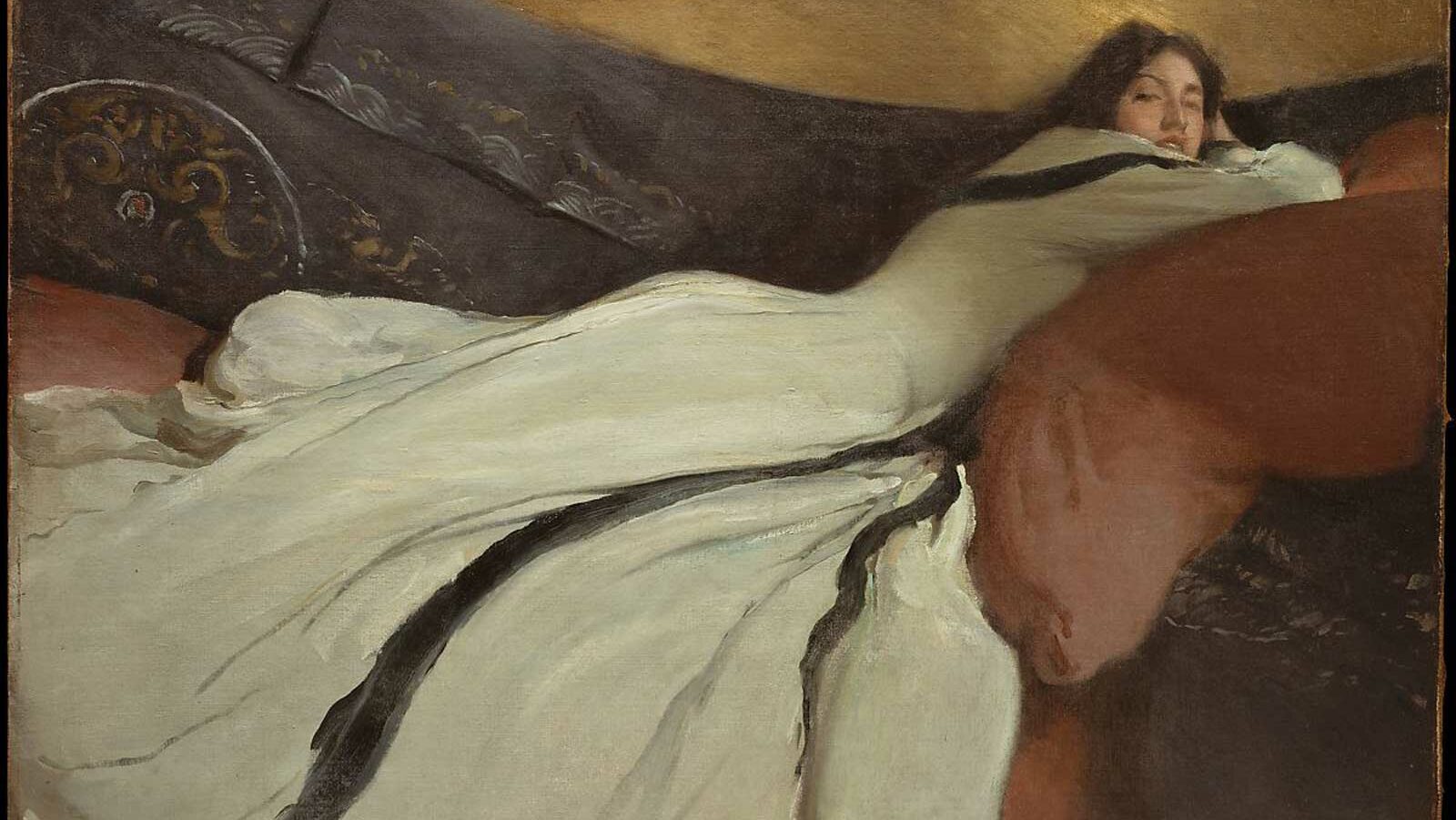Reading Time – 7 Minutes, Difficulty Level – 1/5
“Consumption, I am aware, is a flattering malady,”
~ Charlotte Brontë (1849) wrote of her sister, Anne, who later died from the illness.
Epidemic Proportions
In the 18th and 19th centuries, “consumption,” now known as tuberculosis, held a pervasive grip on society due to its overwhelming presence. While tuberculosis has existed for millennia, the disease reached epidemic proportions in 19th-century Europe, primarily due to the emergence of urban centers, overcrowding, and inadequate sanitation brought about by the Industrial Revolution. Spread by aerosolized droplets when an infected individual coughs or sneezes, the vast spread of tuberculosis in the Victorian era was also helped by malnutrition, air pollution, and crowded, poorly ventilated surroundings. At its peak, tuberculosis caused an estimated quarter to a third of all deaths in Europe. In fact, of the six Brontë siblings, five would die of tuberculosis, with only Charlotte avoiding the infection.
Unsurprisingly, literature of the time reflected the potent role tuberculosis played in the Victorian era – The Brontë sisters – Emily, Charlotte, and Anne – all wrote about “consumptive” characters, from Jane Eyre‘s (1851) Helen Burns to Wuthering Heights‘ (1947) Frances Hindley to Agnes Grey‘s (1947) laborer Mark Wood. Tubercular characters also appeared in works outside Great Britain, like Victor Hugo’s Les Misérables (France, 1862) and Harriet Beecher Stowe’s Uncle Tom’s Cabin (United States, 1852). Tuberculosis was responsible for the early deaths of many prominent writers, including Anton Chekhov, Franz Kafka, and John Keats, whose works were all infused with stories of “consumption.”
A Death Sentence
“I cannot be deceived in that color – that drop of blood is my death warrant – I must die”
~ John Keats, on seeing his blood-stained handkerchief after a coughing fit.
In the 19th century, receiving a diagnosis of “consumption” was essentially a death sentence, and its victims were frequently young and in the prime of life. John Keats died of tuberculosis at the age of 25 in 1821. Anne Brontë was 29 at the time of her death, and Emily Brontë was 30.
Tuberculosis, caused by the bacterium Mycobacterium tuberculosis and transmitted person-to-person through aerosolized droplets, most commonly targets the lungs, causing nodular lesions (tubercules) that destroy the lungs. The course of the disease was often slow and long – the active phase of the disease in which the bacteria grow and destroy tissue, could span a decade before killing its host.
Tuberculosis was, and is, a wasting disease (thus the name “consumption”) – sufferers slowly wasted away as the disease caused severe weight loss. The disease was also characterized by chest pain, fever, night sweats, a prolonged cough producing sputum and occasionally the characteristic symbol of “consumption” that Chekhov described in a letter from 1897: “Hardly had we sat down to the table when a vigorous flow of blood started streaming from my throat.”
The Frail and Tragic (but beautiful?) Consumptive Lady
So, how did such an insidious disease become to be known, as Charlotte put it, a “flattering malady?”
Even the word ‘consumption’ hints at the romanticism and flair the Victorian era placed on the condition – as if something ethereal and mysterious consumes its pitiful sufferers and causes a slow, romantic descent into death. As the germ theory of disease did not take hold until the end of the 19th century, it was thought that “consumption” was a hereditary disease triggered by miasmas, or “bad airs,” in the environment. In the mid-19th century, tuberculosis became increasingly associated with the feminine, as in Victorian society, desirable women embodied qualities such as purity and frailty. As a result, ‘maladies’ that were thought of as delicate or feminine, such as the frail frame caused by tuberculosis, became closely associated with women.

In addition, tuberculosis reinforced the typical beauty standards of the day – pearly white skin, rosy cheeks (which, for consumptives, resulted from fever), and a thin, frail frame were the sought-after ideals of a beautiful Victorian woman. The image of the “consumptive heroine” in literature as a pale, fragile, and tragically beautiful figure appealed to Victorian ideals of womanhood and further cemented society’s waifish Victorian beauty standard.
Consumptive Beauty Dies Out (literally and figuratively)
The image of the “consumptive beauty” prevailed throughout the 19th century and even into the early 20th century. In 1882, the German medical scientist Robert Koch successfully identified Mycobacterium tuberculosis as the cause of “consumption.” At the same time, germ theory was slowly taking root in medicine. While society was slow to accept these advances, these two developments represented a substantial, pivotal moment in public health and initiated a change in the perception of “consumption.”
“Consumption” ceased to be a mysterious, ethereal affliction and became a foe with a name.
“Consumption” was a contagious disease, not an inherited, romantic affliction that enhanced women’s beauty.
As medical advances developed treatments and policies toward fighting tuberculosis, cultural attitudes advanced and shifted slowly behind. Sanitoriums were introduced to isolate the infected. The very first public health campaigns were initiated to combat the spread of tuberculosis – men were urged to shave their beards and carry pocket spittoons, women were encouraged to stop wearing dresses that dragged across dirty streets and walkways, and children were taught to play outdoors, keep their face, hands, and fingernails clean, and cover their coughs and sneezes. The waist-cinching corset fell out of favor, and health symbolized privilege and wealth. The first effective antibiotic treatment for tuberculosis, streptomycin, was introduced in 1945. Today, tuberculosis remains a significant global health concern, particularly in areas with limited access to healthcare and resources. Undoubtedly, tuberculosis has lost its place as a romantic affliction and is instead seen as a scourge to be eliminated.
While the concept of “Consumptive Chic” may seem absurd to modern sensibilities, the Victorian era was not the last time frail and emaciated women were idealized and glamourized – one only needs to look back a few years to the 1990s Heroin Chic and thigh gap trends and the Pro-Ana/Thinspiration underground movement of today. However, these trends have lacked the greater societal acceptance that “consumptive chic” arguably held.
The decline of “consumptive chic” and the failure of other similar romantic notions of ‘sickly frail women as beautiful’ illustrates the power of science alongside cultural evolution. Cultural evolution and germ theory acceptance helped dispel myths about romantic infectious diseases. We can be hopeful that this cultural evolution and belief in science will serve to limit any other unhealthy expectations of beauty from taking root.
REFERENCES
- Anderson, D.M., Charles, K.K., Olivares, C.L.H., & Rees, D.I. (2019). Was the first public health campaign successful?. AEJ: Applied Economics, 11(2), 143-175.
- Barberis, I., Bragazzi, N.L., Galluzzo, L., & Martini, M. (2017). The history of tuberculosis: from the first historical records to the isolation of Koch’s bacillus. J Prev Med Hyg, 58(1), E9
- Hakosalo, H. (2020). Lust for life: coping with tuberculosis in late nineteenth-century Europe. Med Hist, 64(4), 516-532.
- Jilani, T.N., Avula, A., Gondal, Z., & Siddiqui, A.H. (2018). Active tuberculosis In: StatPearls. Treasure Island, FL: StatPearls Publishing.
- Murray, J.F., Schraufnagel, D.E., & Hopewell, P.C. (2015). Treatment of tuberculosis: A historical perspective. Ann. Am. Thorac. Soc., 12(12), 1749-1759.
Featured Image: John White Alexander “Repose” (1895) , oil/canvas 53 X 63 in, Metropolitan Museum of Art

I’m Cheryl Haines and I’m passionate about all things biology and public health. I have a diverse background within that – an M.Sc. in Ornithology, an M.P.H. in Environmental Epidemiology, with time spent teaching and in healthcare. I love to encourage curiosity and hope to instill a sense of wonder about science in my readers.







